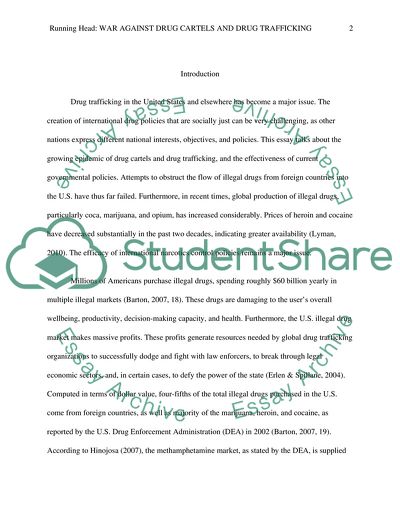Cite this document
(“Drug cartels and drug trafficking Essay Example | Topics and Well Written Essays - 3500 words”, n.d.)
Drug cartels and drug trafficking Essay Example | Topics and Well Written Essays - 3500 words. Retrieved from https://studentshare.org/law/1618554-drug-cartels-and-drug-trafficking
Drug cartels and drug trafficking Essay Example | Topics and Well Written Essays - 3500 words. Retrieved from https://studentshare.org/law/1618554-drug-cartels-and-drug-trafficking
(Drug Cartels and Drug Trafficking Essay Example | Topics and Well Written Essays - 3500 Words)
Drug Cartels and Drug Trafficking Essay Example | Topics and Well Written Essays - 3500 Words. https://studentshare.org/law/1618554-drug-cartels-and-drug-trafficking.
Drug Cartels and Drug Trafficking Essay Example | Topics and Well Written Essays - 3500 Words. https://studentshare.org/law/1618554-drug-cartels-and-drug-trafficking.
“Drug Cartels and Drug Trafficking Essay Example | Topics and Well Written Essays - 3500 Words”, n.d. https://studentshare.org/law/1618554-drug-cartels-and-drug-trafficking.


